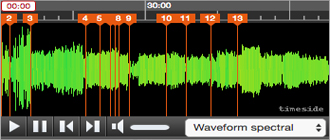Presentation
There are some of those monuments, which are "made" to become "museums".
The Ennejma Ezzahra Palace is undoubtedly one among such monuments. Its inauguration, as historic monument open to the public back in 1992, confirmed this destiny, whose first manifestation appeared practically right after the completion of the construction works in the early twenties.
A true museum of the finest artistic achievements of a recreated Orient, this artist's residence, whose designer was particularly attached to the best of Arab-Muslim culture, had all the assets to become a "museum".
First of all, the monument itself, a veritable jewel of Arab-Islamic architecture, which, moreover, witnessed a extraordinarily intense artistic and intellectual effervescence and an exceptionally animated social life during the three First decades of the 20th century, before the master of the place passed away (in October 1932). Add to that the superb gardens surrounding the palace, the design of which is inspired by the best of the art of the so called Islamic garden.
Then there are all these collections of art objects that have been patiently built up by the designer of this place and later by his heirs. Everything suggests that Baron Erlanger had an interest in museums ; There was even an "Erlanger Museum", which was created in Sidi Bou Said by Baroness Bettina d’Erlanger in memory of her late husband, with the aim of a selection of his works.
Rodolphe d'Erlanger the patron, the art lover, the pioneer in the preservation of heritage and places of memory, could have left a will in which he would have specified, like a certain count Moses de Camondo, the conditions of converting his residence into a museum :
"… The interior layout of this dwelling must be maintained as it is at my death, that is to say that no furniture or objet d’art should be moved or relocated except for certain seats or small tables that could hinder the circulation of visitors, at the condition that they remain in the same room. Every endeavour should be made so as visitors may see displayed objects at their ease and so as the present harmony of the palace is maintained…".
It is indeed the museological approach that was chosen for this museum house, which never ceases to amaze us by its outstanding architecture and its collections.
© 2014 CMAM. All rights reserved. Designed by All Best Services





